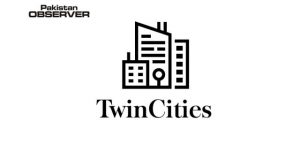National Institute of Historical and Cultural Research (NIHCR), Centre of Excellence, Quaid-i-Azam University, Islamabad on Sunday organized the webinar on Discourse of History on Indo-Pak History from Antiquity to Modernity III.
The webinar was attended by over 700 participants ranging from students, teachers and researchers to have greater insights into the valuable views of the guest speaker.
The guest speaker Prof Emeritus Aslam Syed while responding to a question said that there were 23 foreign invasions took place before Muslims arrived to India.
He said, Aryans from Central Asia were the first to invade India followed by Macedonians, Maurians, Kushans, Scythians, Parthians, Bectarians, Sasanids and lastly Huns, among others, before Muslims actually arrived to India.
Geographically, it was convenient for all these people to easily get to India either through land or sea routes, he added.
The guest speaker Prof Emeritus Aslam Syed has been serving the Center for Religious Studies, Ruhr Universität, Bochum, Germany.
He remained Chairman, Department of History, Quaid-i-Azam University, Islamabad and also served the NIHCR as its Director.
Prof Syed revealed that the successive invaders got to India through Central Asia connecting Afghanistan, Iran and Pakistan due to political developments taking place in China and Mongolia.
The foreign invaders introduced their culture, system of administration, their languages, scripts and way of writing even their gods and goddesses.
Replying a question, the guest speaker said that there was no tradition or concept of historiography in India.
Hence, as the sources like Vedas and Mahabharta say, what was happening in India at that time as Indians or India in itself initially did not invade any State as they remained involved in in-house disputes.
Responding to a question, Prof Syed said that history of a civilization consists of more than just rulers and states, which is why historians also pay close attention to social, cultural and economic life every step of the way.
Although, he said, India seen a long succession of kingdoms and empires and was usually divided up by several at any particular point in its history, peoples over time came to share some things in common.
Socially, the peoples of India were largely organized by the caste system. Culturally, the peoples of India shared in the development of Hinduism and Buddhism, two major religious traditions that shaped people’s understanding of the world and their place in it, he said.
It was 22nd consecutive session on the Discourse of History, a brainchild of the NIHCR Director Dr Sajid Mahmood Awan.
This activity inculcates interest to learn more and more about history not only among students, scholars and historians as well as among ordinary people belonging to any field of life to know about nations’ ways of running their States in a journey from antiquity to modernity.
Replying a question, Prof Syed said that India has been invaded multiple times due to instability and vulnerability of Indian rulers at that time.
The NIHCR Director Dr Sajid Mahmood Awan conducted the Webinar by triggering a dialogue with Dr Syed for substantiating this discourse.
This inclusive activity has been taken up every week for the benefit of students in general and capacity-building of the teachers and researchers in particular, he said.










